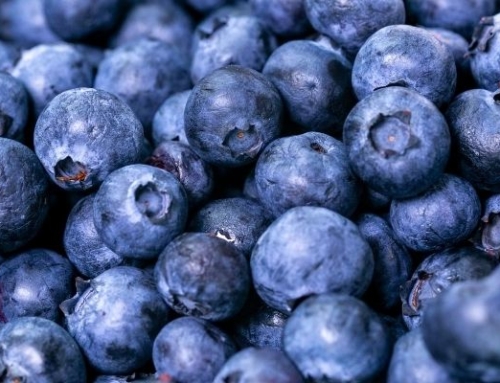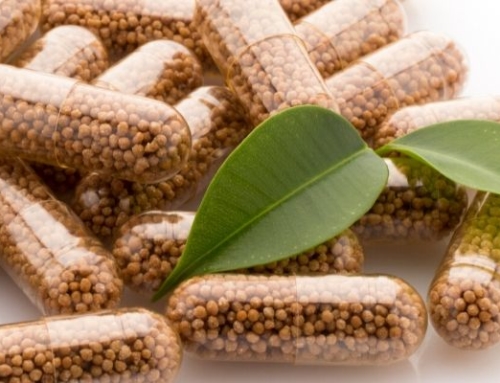Diabetes, how to regulate carbohydrates
in the Organism?

Carbohydrates or sugars are one of the three main energy nutrients (with lipids and proteins) of the human body. The essential function of carbohydrates is to provide energy, but they also play an important role in the structuring and functioning of cells, tissues, and organs. A real vital fuel of our organism, they bring us energy and good mood.
In excess, they are stored as fat (weight gain, obesity) and may favor the development of diabetes Type 2 Diabetes. So, naturally, women’s magazines and other beauty tips tell us that carbohydrates are the enemies of our waistline and our health and that we must simply stop consuming it: That’s not true! Indeed, sugars are not only indispensable to our shape but in addition, they can help us slim down!
How to regulate Carbohydrates in the Organism?
Our body needs approximately 130g of glucose per day to cover only the energy requirements if it of the brain. Maintaining our blood glucose (or blood sugar) level at the optimum level is very important. Glucose can come directly from food carbohydrates, glycogen stores, from the conversion of certain amino acids as a result of proteolysis. Several hormones, including insulin (produced by the pancreas), act to regulate the blood flow of glucose in order to maintain it at an appropriate level, favoring its entry into the cells and its conversion into energy.
Unfortunately, our current sedentary lifestyle and poor eating habits, often do not allow our bodies to self-regulate and lead to increased cholesterol, overweight even obesity, and type II diabetes. Remember that, the increase in blood sugar hyper-stimulates the pancreas, which increases the secretion of insulin to compensate. After a certain number of years, the pancreas is exhausted, glucose intolerance appears, then type 2 diabetes.
Natural plant extracts blends, combined with amino acids help Carbohydrate metabolism
Galega, Hypoglycemiant Properties
Dr. Georges Tanret and Henry Simonet embarked on 20 years of studies on the Galega and on the alkaloid that it contains. They demonstrated that the Galega triggers a real hypoglycemia (which can be fatal) and is therefore effective in decreasing the sugar of diabetics. Their studies were then validated by a number of scientists(1) and were extended to Metformin (2) (3) (a first-line drug for the treatment of type 2 diabetes, derived from Galega).
Today the Galega is used for:
– Activating the metabolism of carbohydrates
– Replacing insulin. It is recommended for insulin-dependent diabetes (4)
Bearberry, Diuretic Effects
The Bearberry has been known since the XIIth century for its diuretic and anti-infectious effects and even recent studies have scientifically confirmed this diuretic action(5). Another highlight of bearberry is that it is metabolized exclusively in the urinary tract, where it degrades into glucose and a powerful antiseptic: hydroquinone (very close to phenol). In other words, the plant releases its anti-infectious principle exactly where it is needed!
Grapefruit acts on insulin resistance and on the blood glucose level
Grapefruit, a real health, and slimming ally that contains many active ingredients: antioxidants, soluble fiber, lycopene, vitamin A, beta-carotene, flavonoids (naringin and hesperetin), limonoids and carotenoids. These have beneficial effects on cholesterol, for the prevention of hyperglycemia and against the proliferation of cancer cells. Grapefruit would also improve blood circulation and would be beneficial to the heart.
It has been shown above all that the consumption of grapefruit allows to lose weight and to reduce the insulin resistance (6). On the other hand, one of the grapefruit flavonoids reduces blood glucose and would prevent hyperglycemia.
Bilberry and grapevine seeds, antioxidant and hypoglycemiant virtues
Looking for carbohydrates regulation without eliminating free radicals from our body is wasted effort, so it is essential to choose plants with high antioxidant potential. Bilberry, rich in vitamin C, also provides iron, magnesium, potassium, and phosphorus. It has a record number of flavonoids with fluidizing, antioxidant and anticancer properties. Apart from other phenolic components, its contain a high concentration of anthocyanins, the antioxidative effect of which far exceeds that of vitamins C and E.
Numerous clinical and epidemiological studies have been published on the links between the consumption of blueberries and a reduction in the risks of cardiovascular and degenerative diseases. They indicate that consumption of flavonoids decreases the risk of atherosclerosis, a risk factor for cardiovascular disease. On the other hand, the phenolic compounds of blueberries would help to reduce the oxidation of blood lipids, the effects of oxidative stress and inflammation of the vascular system (7) Blueberry, therefore, reinforces the capillaries (anthocyanosides) by protecting them from oxidation (8), improves the contractile functions of the vessels and stimulates the regeneration of the sticks arranged on the retina.
Grape seeds consist of 95% polyphenols which possess antioxidant, anti-inflammatory and anti-oedematous properties. They have a protective action on the liver, an antimicrobial action, an antioxidant action and a diuretic action.
All these properties have of course been validated by scientific research on grape polyphenols, including resveratrol and oligo-proanthocyanidins (OPC) (9).
Queen of the Meadow and Rhubard to strengthen the effectiveness
Adding these 2 plants in a blend of natural plant extracts will increase its efficiency. Known for centuries, the queen of mead contains, among other things, salicylic acid, methyl salicylate, flavonoids, tannins and some trace elements such as iron, sulfur or even calcium. It is mainly used as a painkiller but its flavonoids have been the subject of recent research and have been recognized for their draining effects. It is also a “depolluting” plant since it is capable of capturing certain toxins such as benzo (a) pyrene.
Rhubarb is a vegetable that contains high levels of provitamin A, as well as vitamins B, C. Its stem is made up of 74% dietary fiber that helps regulate intestinal function while decreasing blood cholesterol levels. Indeed, a study of patients with atherosclerosis (thus at high risk of cardiovascular disease) showed that regular consumption of rhubarb decreased “bad” cholesterol (10).
On the other hand, rhubarb is a non-negligible source of minerals such as potassium (288mg / 100g), calcium (86 mg / 100g) and phosphorus (14mg / 100g). Its antioxidant substances limit the risk of cardiovascular disease and cancer (11).
L-carnitine converts fat into energy and intensifies insulin sensitization
In synergy with the 5 plants mentioned above, Carnitine has two very interesting actions:
1- it allows the body to “burn” fat by accelerating the transport of fatty acids (metabolic burning) – In 2004, Professor Luppa of the University of Leipzig described L-carnitine as a “fat burner”.
2- it increases the sensitivity to insulin as part of a diabetes treatment – A study carried out in 2007 shows that taking L-carnitine increases insulin sensitivity in the treatment of diabetes (12).
Carnitine is a non-essential amino acid, because it is synthesized by the liver from other amino acids: lysine and methionine. It allows the transport of long chain fatty acids through the inner membrane of the mitochondria: this process allows the production of energy in the form of adenosine triphosphate (ATP). These transported fats are degraded, used and burnt by a beta-oxidation phenomenon, instead of being stored.
L-tryptophan to facilitate weight loss
L-tryptophan is an “essential” amino acid because it is not manufactured by the body. Discovered in 1901, it was the metabolic precursor of serotonin. It is used to relieve depression, promote falling asleep or facilitate weight loss. The intake of L-Tryptophan occurs naturally through the ingestion of protein-rich foods, but in reality, diet alone is not enough to provide us with the L-Tryptophan level necessary for the proper functioning of our body. In addition, only a small part of the ingested amount reaches the brain, which further reduces its effectiveness.
Increasing the intake of carbohydrate-rich foods (bread, cakes, pizzas, ice creams) improves insulin production itself, increases cerebral serotonin and provides a fleeting sense of well-being. Unfortunately, this overproduction of insulin also increases the conversion of carbohydrates and amino acids released from the blood into stored body fat. There is, therefore, an obvious “cause-effect” phenomenon between carbohydrate dependence, obesity, and serotonin. Therefore, supplementation with L-tryptophan is necessary and is the most natural way to improve the psychological state without causing an increase in fat storage.
Each of the plants described above has components with their own potencies, that sometimes seem to overlap, but the important message here is that to get a comprehensive and targeted action they work best “associated” together for their synergistic action. Only a synergistic complex allows the body to effectively facilitate the metabolism of carbohydrates by acting on several “aspects” of the condition.
Click here to discover this unique complex
Sources:
[1] PASIK C., Merck-Lipha, Glucophage : servicing diabelotogy for 40 years, 1997
[2] Thèse sur La Metformine, une vieille molécule pleine d’espoir par Mr RINALDI DAVID – Text here
[3] Dr Bailey CJ, Day C. Metformin : its botanical background. Practical Diabetes International, Volume 21, Issue 3, pages 115–117, April 2004, text here
[4] Pundarikakshudu K, Gray AI, Furman BL. Studies on the hypoglycaemic activity of Galega officinalis (goat’s rue). Fitoterapia, 1994, vol. 65, no5, pp. 423-426
[5] À lire : Guillerey, Contribution à l´étude donne plante médicinaux à réputation diurétique. Thèse de Doctorat en Pharmacie (Diplôme d´Etat), Nancy I, 1982.
[6] Fujioka K, Greenway F, et al. The effects of grapefruit on weight and insulin resistance: relationship to the metabolic syndrome. J,text here
[7] Neto CC. Cranberry and blueberry: evidence for protective effects against cancer and vascular diseases. Mol Nutr Food Res. 2007 Jun; 51(6):652-64.Text here
[8] Kay CD, Holub BJ. The effect of wild blueberry (Vaccinium angustifolium) consumption on postprandial serum antioxidant status in human subjects.Text here
[9] Pizzorno JE Jr, Murray Michael T (Ed). Textbook of Natural Medicine, Churchill Livingstone, États-Unis, 1999. p. 994.[10] Goel V, Ooraikul B, Basu TK. Cholesterol lowering effects of rhubarb stalk fiber in hypercholesterolemic men. J Am Coll Nutr 1997 December;16(6):600-4. Source here
[11] Matsuda H, Morikawa T, et al. Antioxidant constituents from rhubarb: structural requirements of stilbenes for the activity and structures of two new anthraquinone glucoside, text here
[12] Power, R.A., Hulver, M.W., Zhang, J.Y., Dubois, J., Marchand, R.M., Ilkayeva, O., Muoio, D.M. & Mynatt, R.L. (2007) Carnitine revisted: potential use asadjunctive treatment Diabetes Diabetologia, Volume 50, issue 4, (pp. 824-832), text here
Images Credit: DepositPhotos





